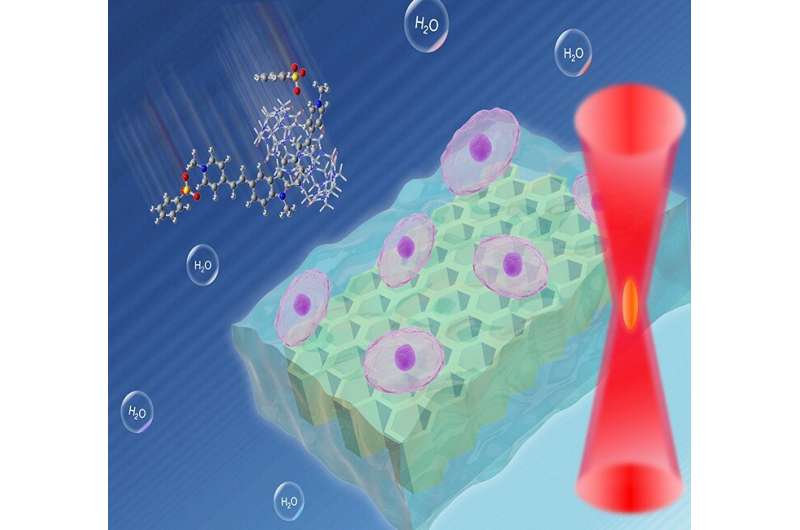This article has been reviewed according to Science X's editorial process and policies. Editors have highlighted the following attributes while ensuring the content's credibility:
fact-checked
peer-reviewed publication
trusted source
proofread
Researchers obtain anion ionic water-soluble two-photon initiator for 3D hydrogel construction

Prof. Zheng Meiling's team from the Technical Institute of Physics and Chemistry of the Chinese Academy of Sciences (CAS) proposed an anion exchange strategy and developed a carbazole-based anion-ion water-soluble two-photon initiator (TPI) (CB7/BT) through host-guest chemical interaction, which improves the nonlinear optical property of the water-soluble TPI.
The study was published in Advanced Functional Materials on Feb. 28.
Organic solvents are often used in traditional two-photon polymerization (TPP). However, the residue left in the structure is not cell-friendly and causes cytotoxicity. Therefore, achieving highly efficient TPP in water is safe and environmentally friendly for the application in the biomedical field. Water-soluble TPI is an important element.
Three methods are commonly used to construct water-soluble TPIs. The direct modification of oil-soluble photoinitiators, the use of nonionic surfactants and the incorporation of oil-soluble photoinitiators into suitable supramolecular hydrophobic cavities.
In this study, CB7 and BT were used as host and guest molecules, respectively. CB7 not only improves the solubility and biocompatibility of BT, but also regulates the photophysical and nonlinear optical properties of BT. CB7/BT generates an alkyl radical to initiate polymerization and the resolution of 127 nm is obtained. A series of 3D hydrogel structures were fabricated and showed low cytotoxicity.
Compared to using iodide as an anion, the initiator with p-toluenesulfonate anion exhibits superior photophysical properties and two-photon fabrication capacity. Therefore, changing the anion is a powerful way to optimize the properties of water-soluble TPI.
More information: Fan‐Chun Bin et al, Carbazole‐based Anion Ionic Water‐Soluble Two‐Photon Initiator for Achieving 3D Hydrogel Structures, Advanced Functional Materials (2023). DOI: 10.1002/adfm.202300293
Journal information: Advanced Functional Materials
Provided by Chinese Academy of Sciences





















